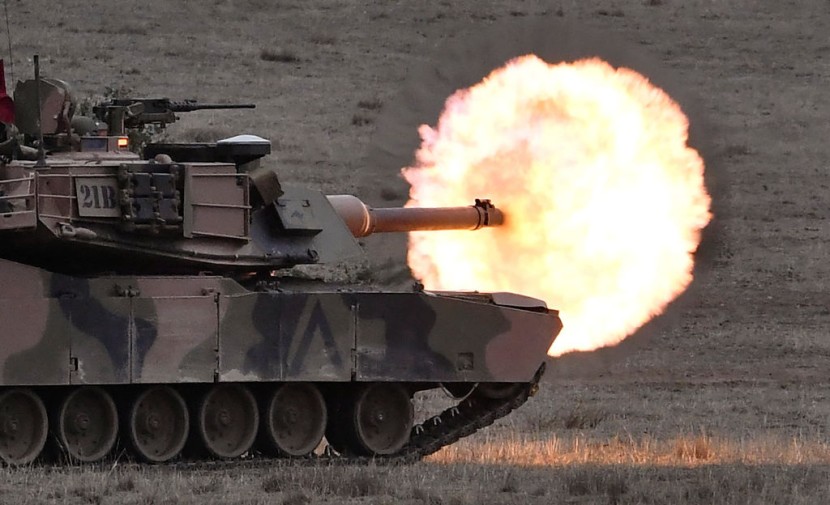
The impending arrival of US-made M1 Abrams tanks in Ukraine has raised expectations and questions about their impact on Ukraine's ongoing counteroffensive against Russian-backed forces.
While these tanks are considered a valuable addition to Ukraine's military arsenal, experts remain divided on their potential advantages in the challenging months ahead, as per to Washington Examiner.
Assessing the Impact of M1 Abrams Tanks on the Ongoing Counteroffensive
The announcement by US Defense Secretary Lloyd Austin regarding the deployment of Abrams tanks to Ukraine has been met with optimism. These tanks are expected to provide Ukraine with a formidable armored capability, complementing the already-present Leopard 2 tanks.
The US pledged a total of 31 Abrams tanks with the aim of bolstering Ukraine's forces sooner rather than later. However, experts caution that the impact of these tanks will depend on various factors, including weather conditions and military strategy.
One critical factor that will influence the effectiveness of the Abrams tanks is the Ukrainian climate. As Ukraine heads into the fall and winter months, it will confront the muddy season, known as Rasputin, which can make military operations challenging.
The Abrams tanks have primarily operated in dry conditions, raising questions about their performance in muddy and snowy terrain with numerous streams and rivers. Defense writer and military expert Michael Peck highlights the need to assess how the Abrams tanks will perform under such conditions.
Whether these tanks can maintain their combat capabilities during intensive mechanized operations in adverse weather and challenging terrain remains to be seen. Despite the challenges posed by the changing weather, Ukraine's determination to continue its counteroffensive remains unwavering.
The successful summer campaign in the Zaporizhzhia region marked a significant breakthrough for Ukraine after months of facing well-fortified Russian defenses. With the new Abrams tanks, Ukraine hopes to push southward, targeting key cities like Tokmak, Melitopol, and the Sea of Azov.
However, experts like Marina Miron raise concerns about deploying the Abrams tanks in the muddy season. She argues that using them in Zaporizhzhia during this period could lead to these heavy tanks getting stuck in the mud, as well as their support vehicles.
This logistical challenge further complicates Ukraine's military operations. Ukraine's military is now faced with the logistical nightmare of managing three different types of unfamiliar Western main battle tanks: the Abrams, Challenger 2, and Leopard 2.
This diversity in tank types strains Ukraine's logistics, making them vulnerable to potential disruption by Russian forces. Moreover, the Abrams tanks' maintenance presents its own challenges. Ukraine needs to secure spare parts for different versions of the tanks and ensure that its engineers are trained to maintain these sophisticated machines.
Additionally, the Abrams' high fuel consumption means that the tanks can only move as fast as their fuel supply allows, further complicating military operations, Newsweek via MSN reported.
Ammunition Shortages and Tactical Considerations
Another concern is the availability of ammunition. Not all the tanks use the same type of ammunition, and there is already a shortage. With sufficient ammunition, the usefulness of these tanks, including the Abrams, could be protected.
Furthermore, experts are still determining how the Abrams tanks will fare against the extensive Russian defenses, including mines, anti-tank weapons, and anti-tank ditches.
Russian forces have demonstrated their capacity to inflict losses on Ukraine's Western-supplied armor, such as Leopard tanks and Bradley fighting vehicles. The impending arrival of US-made Abrams tanks in Ukraine holds promise as a valuable addition to the country's military capabilities.
However, their effectiveness in the coming months will be influenced by various factors, including weather conditions, logistical challenges, and the evolving tactics of Russian-backed forces. As Ukraine continues its counteroffensive, it must carefully consider leveraging the Abrams tanks while addressing their challenges.
The country's determination and adaptability will play a crucial role in determining the true impact of these formidable machines on the front lines. Meanwhile, a Russian drone attack overnight in the Poltava region of the country's center destroyed an oil refinery.
According to Governor Dmytro Lunin, plant activities have been temporarily paused and no fatalities have been reported. The regional governor of Dnipropetrovsk, Serhiy Lysak, claimed that Russia targeted Nikopol and three other localities, causing five homes to be damaged.
The Ukrainian military, 17 of the 24 drones Russia launched in its nocturnal attacks were shot down by Ukraine's air defenses, according to VOA News.
© 2025 HNGN, All rights reserved. Do not reproduce without permission.








